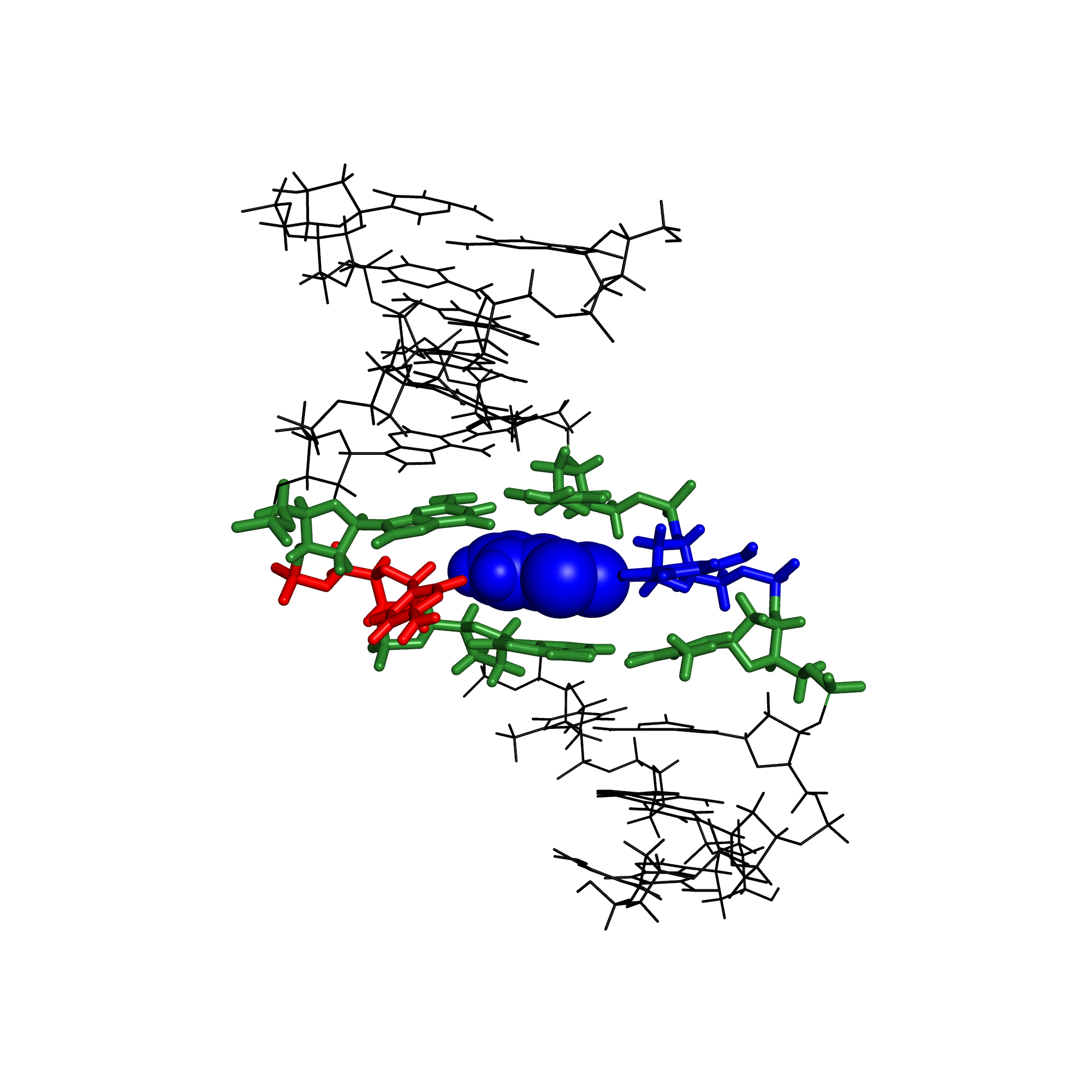
DNA can be damaged by external driving forces (radiation, alkylating agents) and normal processes (DNA replication errors, lipid peroxidation). Damage to DNA can include the formation of base and sugar radicals and methylation or deamination of nucleobases. This damage can lead to, for example, base mispairing, biological cross-links or DNA strand breaks. We study the properties of damaged DNA constituents in order to better understand their mechanism of formation and reaction pathways. The goal is to identify ways to prevent the initial damage or further chemical reactions. Projects of current interest involve the formation of bulky DNA adducts (addition products) due to exposure to environmental pollutants such as chlorophenols and ochratoxin A. Some of our work on DNA damage is performed in collaboration with Richard Manderville’s group at the University of Guelph, where our calculations direct and/or explain their experimental data.
